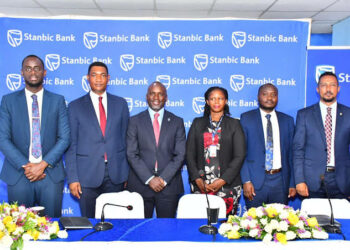Recently, Huawei releases the 10 trends of data center facility in 2025, aiming to provide the industry a clear picture of data center facility evolution and enlighten the way to the future.
From 2010 to 2019, the data center industry experienced a spectacular decade. Data center has evolved from ICT equipment rooms to cloud data center. Rapid development of new technologies such as artificial intelligence, cloud computing, big data, and 5G will bring a new golden era and market demand for data centers will increase dramatically. At the same time, data centers are facing challenges such as difficulty to obtain construction resources, long construction period, and high energy consumption. In addition, data centers also face many challenges in terms of architecture flexibility and O&M.
Trend 1: High Density
The CPU and server capacity keep continuously increasing with the evolving of IT computing capacity. As the demand for AI applications increases, the importance of AI computing power further rises. To balance efficiency and costs, data centers will develop towards high density. Currently, the average power capacity in a data center is 6 to 8 kW/rack. It is anticipated that power density of 15 to 20 kW/rack will predominant data centers by 2025.
Trend 2: Scalable Architecture
Generally, the lifecycle of IT devices is 3 to 5 years, and the power density doubles every 5 years. However, the lifecycle of data center infrastructure is 10 to 15 years. The data center facility will support IT device evolution for 2-3 generations. It demands scalable expansion and phased investment for optimal CAPEX in the lifecycle of data center. In addition, the data center must support hybrid deployment of IT devices with different power densities because of diversified IT services running there.
Trend 3:Green
Currently, the power consumption of data centers accounts for 3% of the world’s total power consumption. It is estimated that the total power consumption of data center will reach more than 1000TWh by 2025. Energy saving, emission reduction, and operating expense (OPEX) reduction are big challenges. Reducing the power usage effectiveness (PUE) of data centers and building green data centers are inevitable. It is an irresistible trend to use clean energy and waste heat, and to save resources (such as energy, land, water, and materials) throughout the life cycle of the data center. It is estimated that the average PUE of new data center in China will drop to 1.1 in the next five years.
Trend 4: Quick Deployment
Internet services usually burst in a short period of time, and data and traffic demands on the service side increase sharply. Therefore, data centers must be rolled out quickly. On the other hand, data center is changed from a support system to a production system. Faster rollout means faster benefits. The typical TTM of a data center is 9 to 12 months, which is expected to be shortened to less than 6 months in the future.
Trend 5: Full Digitalization and AI-enablement
Data center facilities will inevitably evolve towards digital and intelligent. With the continuous improvement of IoT and AI technologies, data centers will gradually evolve from single-domain digitalization in terms of O&M, energy saving, and operation to full-lifecycle digitalization and automatic driving in terms of planning, construction, O&M, and optimization. AI will be widely applied.
Trend 6: Full Modularization
More data centers will be constructed in full modular mode to address the problems of slow construction and high initial investment costs. Modular design will evolve from component modularization to architecture modularization and equipment room modularization, finally achieving full modularization of data center. The full modular design will enable fast deployment, flexible capacity expansion, simple O&M, and high energy efficiency.
Trend 7:Simplified Power Supply Architecture. Lithium Battery Replace Lead-acid Battery
The power supply and distribution system of a traditional data center is complex and fragmented, occupies a large footprint, and is difficult to locate faults. A simplified power supply architecture will reduce power conversion times, shorten the power supply distance and footprint, improve the space utilization rate and system energy efficiency. Compared with lead-acid batteries, lithium batteries have advantages in terms of footprint and service life. As the cost of lithium batteries decreases, lithium batteries will be widely used in data centers in the future.
Trend 8: Convergence of Liquid Cooling and Air Cooling. More Indirect Evaporative Cooling and Less Chilled Water Cooling
GPU and NPU applications generate more high-density scenarios, and liquid cooling systems will become more and more popular. However, some storage and computing services are still in low-density scenarios. To quickly adapt to uncertain IT service requirements in the future, the cooling solution must be compatible with the air cooling system and liquid cooling system. In addition, the complex architecture of the chilled water cooling system hinders quick deployment and easy O&M. Indirect evaporative cooling system, with modular architecture, will shorten the deployment time and simplifies O&M. In addition, by fully utilizing the natural cooling resources, power consumption of the cooling system will be greatly reduced. In areas with suitable climate, the chilled water system will gradually be replaced by indirect evaporative cooling system.
Trend 9: Dynamic Linkage between Bits and Watts
Reducing PUE doesn’t mean that the overall energy consumption of the data center is optimal. Instead of focusing on the data center energy facilities, the energy consumption of the data center needs to be evaluated and optimized as a whole. Through full-stack innovation among facility, IT, chipsets, data, and cloud, bits and watts will work collaboratively to achieve dynamic energy saving and optimal energy efficiency of the entire system.
Trend 10: Trustworthiness
As data center facility becomes more intelligent, the network security threats will multiply. The data center must have six features: resilience, security, privacy, safety, reliability, and availability to prevent attacks and threats from environments and malicious personnel, including network intrusion threats.
Do you have a story in your community or an opinion to share with us: Email us at editorial@watchdoguganda.com











